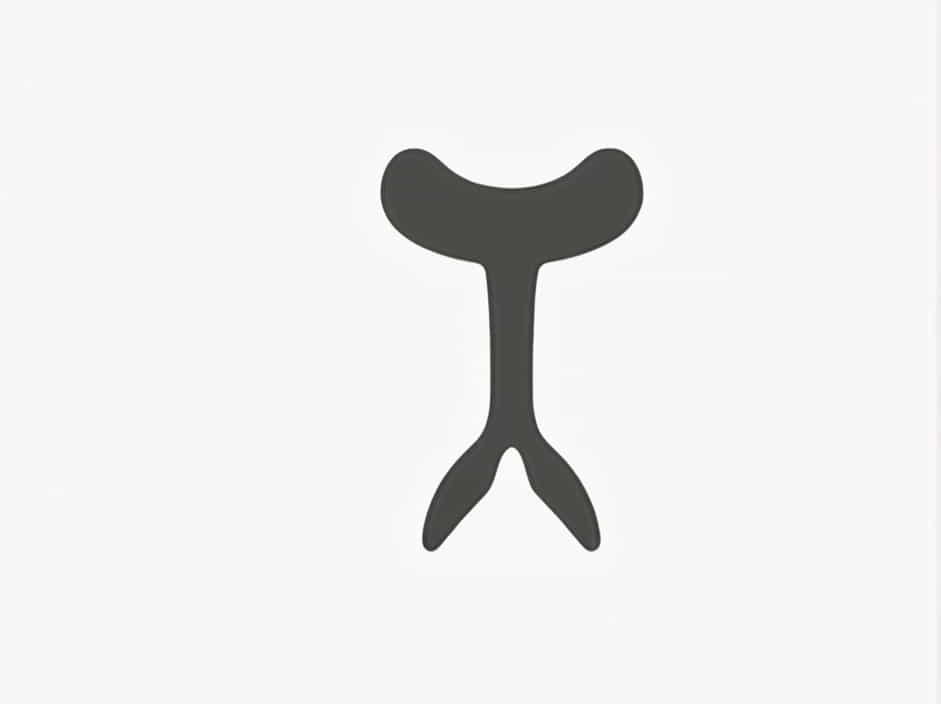The tailbone, also known as the coccyx, is a small but significant part of the human skeleton. It is located at the bottom of the spine and plays a role in supporting body weight, stabilizing posture, and connecting important muscles and ligaments.
Despite being a vestigial structure—meaning it no longer serves the same function as it did in early human ancestors—the coccyx remains an essential part of balance and movement. Understanding its structure, function, common injuries, and treatments can help in maintaining spinal health and preventing discomfort.
Anatomy of the Tailbone (Coccyx)
Where Is the Coccyx Located?
The coccyx is the final segment of the vertebral column, positioned just below the sacrum at the base of the spine. It is a small, triangular-shaped bone that consists of three to five fused vertebrae.
Parts of the Coccyx
The tailbone is made up of several fused vertebrae and includes:
- Base – The top part that connects to the sacrum.
- Apex – The bottom tip of the coccyx.
- Lateral projections – Small bony structures on the sides that serve as attachment points for ligaments and muscles.
Functions of the Coccyx
Although the tailbone is often considered a vestigial structure, it still serves important functions, including:
1. Supporting Body Weight
When sitting, the coccyx helps distribute body weight evenly and provides balance, especially when leaning backward.
2. Attachment for Muscles and Ligaments
Several muscles and ligaments attach to the coccyx, including:
- Gluteus maximus (supports leg movement and hip stability).
- Pelvic floor muscles (control bladder and bowel function).
- Sacrococcygeal ligaments (help with spinal support).
3. Assisting in Movement and Stability
The tailbone plays a role in stabilizing the pelvis and contributes to proper posture and balance while sitting and moving.
Common Tailbone Issues and Injuries
Since the coccyx is a small and delicate structure, it is prone to injuries and conditions that can cause discomfort. The most common problems include:
1. Coccyx Pain (Coccydynia)
Coccydynia is a term used to describe chronic pain in the coccyx. It can occur due to:
- Trauma or injury (falling on the tailbone).
- Repetitive strain (prolonged sitting on hard surfaces).
- Childbirth (pressure on the coccyx during labor).
- Degenerative changes (wear and tear over time).
2. Coccyx Fractures and Dislocations
A fractured or dislocated coccyx can occur due to:
- Accidents and falls (landing directly on the tailbone).
- Sports injuries (contact sports, cycling, and gymnastics).
- Hard impacts (such as falling down stairs).
3. Tailbone Bruising
Even without a fracture, a bruised coccyx can cause significant pain and discomfort, especially when sitting or moving.
4. Infections and Tumors
Although rare, infections or tumors in the coccyx region can lead to pain and require medical attention.
Symptoms of Tailbone Injuries
If the tailbone is injured, symptoms may include:
- Pain and tenderness at the base of the spine.
- Difficulty sitting or leaning backward.
- Swelling and bruising.
- Pain that worsens with prolonged sitting.
- Discomfort during bowel movements or sexual activity.
Diagnosis and Treatment of Tailbone Pain
1. How Is Coccyx Pain Diagnosed?
A doctor may perform:
- Physical examination (checking for tenderness and swelling).
- X-ray or MRI scans (to detect fractures or structural abnormalities).
2. Treatment Options for Coccyx Pain
Home Remedies for Mild Tailbone Pain
- Use a Coccyx Cushion – A donut-shaped or wedge pillow can reduce pressure when sitting.
- Apply Ice or Heat – Ice helps reduce swelling, while heat relaxes muscles.
- Over-the-Counter Pain Relievers – Medications like ibuprofen or acetaminophen can relieve pain.
- Proper Sitting Posture – Lean forward slightly while sitting to relieve pressure on the tailbone.
Medical Treatments for Severe Tailbone Pain
- Physical Therapy – Strengthening pelvic and lower back muscles can improve posture and reduce pain.
- Manual Manipulation – A specialist may adjust the coccyx position if it is misaligned.
- Corticosteroid Injections – These help reduce inflammation and pain.
- Surgical Removal (Coccygectomy) – In extreme cases, removing the coccyx may be necessary.
How to Prevent Tailbone Pain and Injuries
While some tailbone injuries are unavoidable, taking precautions can help prevent discomfort.
1. Use Proper Sitting Posture
- Avoid slouching and ensure your back is fully supported.
- Use a cushioned chair or ergonomic seat.
2. Be Cautious When Engaging in High-Risk Activities
- Wear protective gear in sports like cycling, skating, or snowboarding.
- Avoid falling backward when possible.
3. Maintain a Healthy Weight
- Excess weight can increase pressure on the tailbone.
- Sudden weight loss can reduce fat cushioning, making the coccyx more prone to pain.
4. Strengthen Core and Pelvic Muscles
- Exercises like yoga, Pilates, and core strengthening improve posture and reduce tailbone strain.
Interesting Facts About the Coccyx
- The coccyx is considered a vestigial structure, meaning it has lost its original function over evolution.
- Some animals, like monkeys and other primates, have longer tailbones because they use their tails for balance.
- The term “coccyx” comes from the Greek word “kokkyx,” meaning “cuckoo,” because the bone resembles a bird’s beak.
The tailbone, or coccyx, may be a small part of the skeleton, but it plays a crucial role in supporting body weight, maintaining posture, and connecting important muscles. Despite being considered vestigial, it remains important for movement and stability.
Understanding common coccyx issues, symptoms, treatments, and prevention methods can help in managing tailbone pain and improving spinal health. By practicing proper posture, avoiding injuries, and strengthening core muscles, individuals can prevent discomfort and maintain a healthy coccyx.
